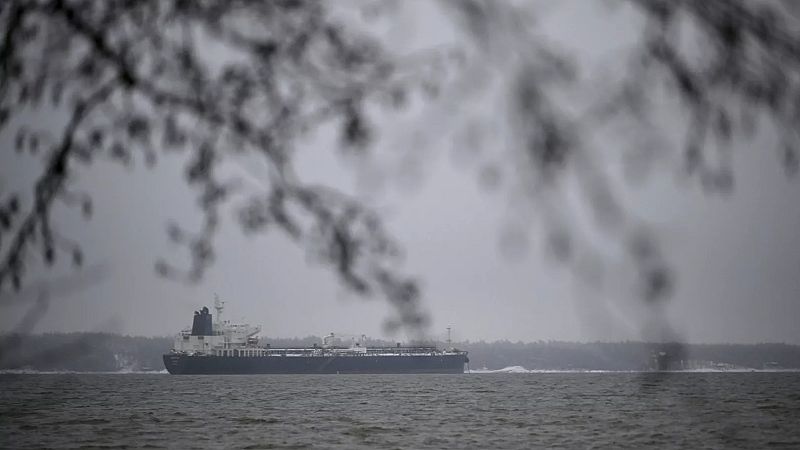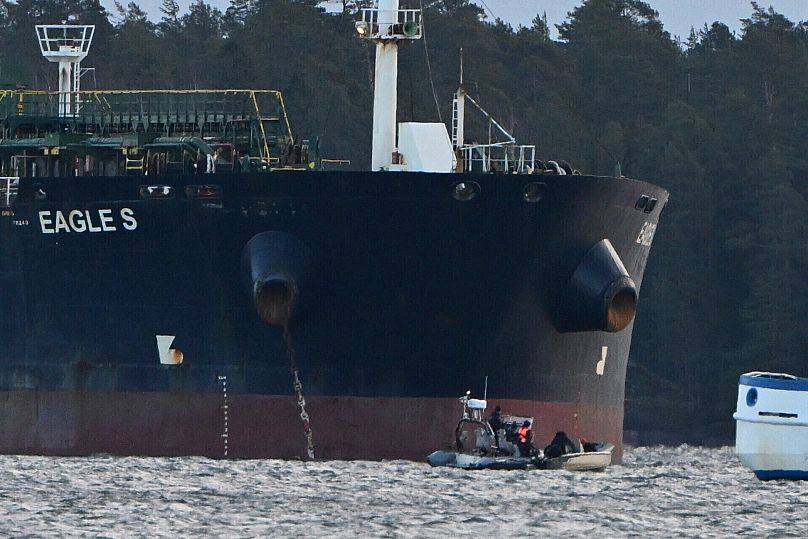Finland charges officers of Russia-linked Eagle S ship that damaged undersea cables

Authorities in Finland said on Monday that they have charged the captain and two senior officers of a Russia-linked ship that allegedly damaged undersea cables last year connecting Finland with Estonia.
The Finnish deputy prosecutor general said in a statement that charges of aggravated criminal mischief and aggravated interference with communications were filed against the captain and first and second officers of the Eagle S oil tanker.
Their names were not made public. A statement said the men had denied the allegations.
Authorities have said the vessel dragged its anchor to damage the Estlink-2 power cable and communication links between Finland and Estonia on 25 December.
The Kremlin previously denied involvement in damaging the infrastructure, which provides power and communication for thousands of Europeans.
The Eagle S is flagged in the Cook Islands but has been described by Finnish customs officials and the European Union’s executive commission as part of Russia's shadow fleet of fuel tankers.
These are aging vessels with obscure ownership, acquired to evade Western sanctions imposed following the full-scale invasion of Ukraine and operating without Western-regulated insurance.
For the West, such incidents are believed to be part of widespread sabotage attacks in Europe allegedly linked to Moscow.
The undersea cables and pipelines that crisscross one of the busiest shipping lanes in Europe link Nordic, Baltic and central European countries.
They promote trade, energy security and, in some cases, reduce dependence on Russian energy resources.
Monday's statement alleges that "the Eagle S, which left Russia’s Ust-Luga with a cargo of oil products, is suspected of cutting five submarine cables in the Gulf of Finland by dragging its anchor on the seabed for about 90 kilometres."
Prosecutors said the owners of the cables have suffered a total of at least €60 million in repair costs.
"The disruption of electricity transmission and telecommunications cables with very high transmission capacity is also suspected to have caused a serious risk to energy supply and telecommunications in Finland, although services could be secured by using alternative connections," the statement said.
It added that the defendants "consider that Finland lacks jurisdiction in the case, as the locations of the cable damages are outside Finnish territorial waters."
The damage to the Estlink 2, which can provide about half of Estonia's electricity needs in winter, did not disrupt service, although it drove up energy prices in the Baltic nations.
The cable is about 145 kilometres long and reaches 90 metres at its deepest point.
Today



